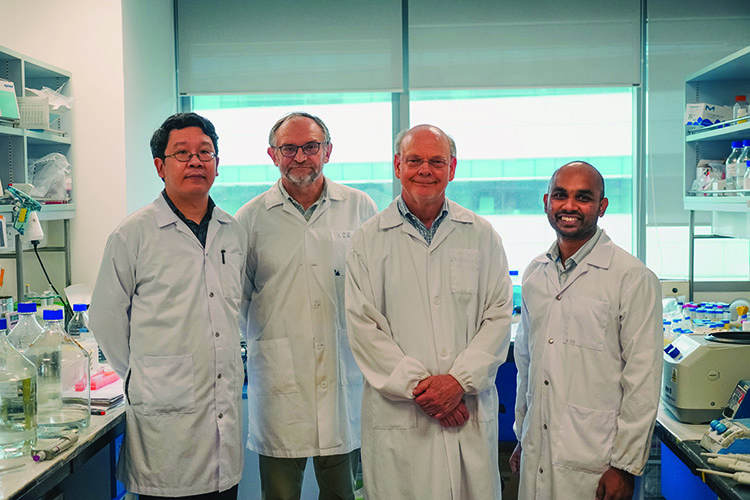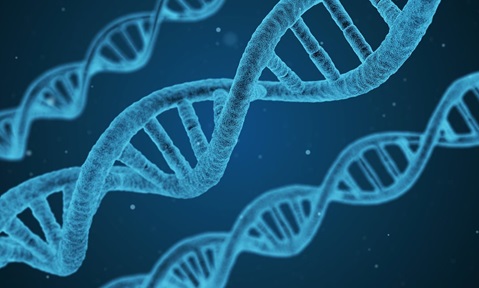Uncovering key chromosome structure
Discovery could improve understanding of ageing and cancer

(From left) Research fellow Dr Wahyu Surya, principal research fellow Dr Nikolay Korolev, Prof Lars Nordenskiöld and research fellow Dr Aghil Soman are among the researchers behind the study on the structure of telomeric DNA. Credit: NTU.
Protective structures at the ends of human chromosomes, called telomeres, have an important function in protecting DNA. Like the plastic tips at the ends of shoelaces, telomeres prevent chromosomes from fraying.
Contrary to schematic depictions in textbooks, the repetitive DNA sequence which makes up telomeres is not arranged in a zigzag formation. Instead, it is stacked in column-like structures resembling a coiled spring.
This discovery by NTU scientists could improve our understanding of human ageing and cancer, as telomeres erode with age and become uncontrollably elongated in cancerous cells.
The column-like structure of telomeres also exposes DNA on the surface of chromosomes and leaves them unprotected – unlike in the zigzag arrangement where DNA is partially buried within. This means that telomeres are more vulnerable to DNA damage than previously thought.
Prof Lars Nordenskiöld, Chair of NTU’s School of Biological Sciences, who led the study, believes that the new telomere findings provide a basis to develop treatments for genetic diseases.
“Knowing the structure of telomeres will allow scientists to better understand how various biomolecules interact with them. This could shed light on the mechanisms involved in ageing and cancer, thereby paving the way for treatments targeting how telomeres are damaged,” says Prof Nordenskiöld.
---
Find out more about the study “Columnar structure of human telomeric chromatin” in Nature (2022), DOI: 10.1038/s41586-022-05236-5.
The article appeared first in NTU's research & innovation magazine Pushing Frontiers (issue #22, August 2023).


.tmb-listing.jpg?Culture=en&sfvrsn=82921582_1)


.tmb-listing.jpg?Culture=en&sfvrsn=ba129532_1)

